
Spices are an essential part of many cuisines, but their production and trade have significant impact on the environment. They don't always use sustainable methods, exploit farmers and workers and add to transportation emissions.
As consumers, it's up to us to make more sustainable spice choices. This means sourcing spices from farmers and producers who are making responsible decisions that benefit the environment and their communities.
How Spices Are Produced
Spices are an important ingredient in many dishes around the world. They are not only used to enhance the flavour of food, but also have medicinal, cosmetic and religious uses.
The history of the spice trade dates back 4,000 years ago, when the first spices were discovered in Mesopotamia. As human society developed, spices were a key part of the economy and a major bartering commodity.
In Europe, the European Age of Exploration triggered a search for maritime routes to access the lucrative Eastern spice trade. The Europeans' search led to the establishment of seafaring nations, like Portugal and Spain.
As well as the search for direct access to the East, there was an increasing demand for spices in Europe and a need to find new ways of importing them into the continent. During the 15th century, the European spice trade was transformed by the arrival of new explorers like Christopher Columbus (1451-1506) and Vasco da Gama (c. 1469-1524).
The Impact of Spices on the Environment
As a result of the long, complex history of spice production and trade, spices have had a huge impact on our planet. While a lot of spices aren’t local or organic (and use pesticides), there are ways to make your spice choices more sustainable.
One way is to look for single-origin, direct-to-consumer spices that respect the farmers and their work. This will ensure that your spice isn’t being suckered by the distributors or exporters who take a cut along the way.
Additionally, buying from farmers markets can slash transportation emissions. You can also buy spices that are packaged sustainably, in glass jars or other recyclable materials.
Fortunately, there are more and more companies working to create more sustainable spice options. These companies focus on partnering with smallholder farmers, ensuring a direct, fair-trade supply chain and educating consumers on how their spice purchases affect the world around them.
How We Can Make More Sustainable Spice Choices
The environmental impact of spice production and trade is something we can all make a positive contribution to by making more sustainable choices. One way is by buying spices from businesses that commit to paying farmers a fair price and ensuring that they are paid their full worth for the products they produce.
Another way is by avoiding products that have been chemically boosted or have been dehydrated and artificially flavored in order to increase shelf life. This can negatively impact the flavor and health benefits of the product as it will have been processed in a manner that may not be environmentally friendly.
Fortunately, there are many companies that strive to source their spices sustainably. Some of the most notable include Diaspora Co. and Burlap and Barrel, which both focus on supporting BIPOC-owned spice businesses.
The ProTerra Standard
Achieving the ProTerra Standard is a sign that a company has taken steps to ensure that its supply chain is not linked to deforestation. In addition, it is a sign that the company is committed to sustainability practices throughout its entire operation.
The ProTerra Standard is based on the Basel Criteria for Responsible Soy and was developed by retailer COOP-Switzerland, World Wildlife Fund and other industry and public interest groups. It is designed to provide traceable and verified socially responsible, environmentally sustainable, and non-GM soy products.
Founded in 2012, the Netherlands-based ProTerra Foundation is backed by industry stakeholders from Europe and South America. It is the custodian of the highly successful ProTerra Certification Standard against which non-GMO soy producers and supply chain suppliers have been certifying millions of tonnes of soy for more than six years.
The standard aims to promote sustainable agricultural production systems, whereby the conversion to non-GMOs and full respect of workers and communities' dignity are a priority. The standard sets strict limits on non-GMO organisms, rigorous segregation, PCR testing at critical control points, strong traceability and protection of the rights of workers and indigenous peoples.
Frequently Asked Questions
What are the spices, condiments and seasonings Thailand uses in its dishes?
Thai cuisine is a mixture of Asian influences. It is rooted in India and China along with Southeast Asia.
Freshness is the most important ingredient in Thai food. Fresh ingredients have more flavor when they are picked and prepared quickly. This is why meats and fish, as well as vegetables, fruits, nuts, seeds and grains, are often eaten raw and served warm.
Sauces and spices add depth and flavor to dishes. Fresh basil, cilantro, mint, coriander (cilantro), lemongrass, ginger, turmeric, garlic, chillies, chilli paste, soy sauce, tamarind juice, oyster sauce, palm sugar, coconut milk, lime leaves, galangal root, curry powder, shrimp paste, fish sauce, tamarind water, rice vinegar, etc. These are often used.
What are the uses of Thai spice?
Everyone has heard the term Thai spice, but not all know what it is. When we taste it, our mouths water and we wonder why we aren't eating more.
It isn't just any spice. It's an essential ingredient that adds flavor and depth to dishes that would otherwise be bland.
There are thousands of Thai recipes, but very few include the authentic flavor. Let's discuss how to incorporate these tasty flavors into your meals.
Thais have been using herbs and spices in their cooking since antiquity to add flavor to food. Thai comes from the Sanskrit term for "to prepare".
Thais are still fond of spicy foods. This preference is often due to the heat in Thailand which makes it difficult for people to stay warm without hot drinks. Thais also consume more chili peppers per capita than Americans and Europeans.
The best way to learn about Thai spices is to visit a local Asian grocery store. There will be a large selection of ingredients available including dried chilies (fresh basil leaves), curry paste, ground black pepper, and curry paste.
You may also come across whole peppercorns, cloves, cinnamon sticks, star anise, cardamom pods, ginger root, turmeric powder, cumin seeds, coriander seeds, fennel seeds, nutmeg, mace, mustard seed, saffron threads, garlic, onion, rice vinegar and tamarind juice.
Thai cuisine uses both dry and wet spices. Wet spices are ground finely, while dry spices are typically ground.
Dry spices are often added to a dish directly. You can sprinkle ground red pepper on your chicken soup. Wet spices are commonly mixed with oil or butter to form a paste.
Wet spices can be used in sauces, dressings, and marinades. Some common wet spices include fish sauce, oyster sauce, soy sauce, sesame oil, curry paste, and hoisin sauce.
To make Thai food at your home, it is important to understand which spices are best with particular ingredients.
Red pepper flakes should be used if you're using beef. White pepper is better for seafood such as shrimp.
If you don’t have access or the means to order from an Asian market, it is possible to order online. You can find everything here, from dried chilies to exotic spices and herbs.
So next time you get hungry, think about putting on a little extra heat by whipping up one of these tasty Thai recipes!
What are the main Flavours of Thai Cooking?
Thai cuisine includes several distinct regional cuisines. These include Northern, Central, Southern, Eastern, Western, and Northeastern Thai food. Each region has its own unique flavour profile.
Thai food can be described as sweet, salty or sour.
Thais consider sweetness essential because it makes dishes taste good. Thai cuisine includes sweet ingredients like palm sugar (gulamelaka) or coconut milk.
Thailand is also a popular place for sourness. Sour foods are often served alongside hot dishes. This helps to balance the heat.
Thai food includes spicy food. Thai dishes often use spices such as chili pepper, galangal or ginger root.
Almond Meal vs. Almond Flour: What's the Difference?
Almond meal can be substituted for almond flour and is versatile enough to be used in baking, cooking and even making nut-free meals.
Almond flour could also contain gluten making it difficult for some people to digest. Avoid gluten-free food if you have celiac disease, or any other digestive disorder.
Almond flour isn’t considered a superfood per se but it does contain healthy fats, fibre and protein and no cholesterol.
The nutritional benefits of the almond meal include magnesium, copper, iron, zinc, manganese, phosphorus, potassium, calcium, and vitamins A, B1 (thiamin), and C. In addition, it provides 25 percent of the daily value for folate, 20 percent for niacin, 15 percent for pantothenic acid, and 5 percent for riboflavin.
Almond flour, made from almonds contains monounsaturated and polyunsaturated oil. Both types reduce LDL (bad) cholesterol and increase HDL ("good") cholesterol.
Almond flour is also high in antioxidants, such as phenolics, flavonoids and proanthocyanidins. These compounds protect against oxidative damage caused by free radicals.
In a study published in Journal of Agricultural Food Chemistry, almond flour was found to have an antioxidant activity comparable to blueberries, cranberries or pomegranates and red wine grapes juice.
Almond milk is often sold with almond flour, which has been fortified with additional nutrients.
What's the Difference Between Cooking With Whole vs. Ground Spices?
There isn't any difference between cooking with whole spices and ground spices. After harvesting, all spices are ground. This ensures that there are no differences in the quality of spices.
But the price gap is significant. Whole spices can be more expensive due to the labor involved in their processing. But the flavour is worth it.
You'll often find extra discounts for bulk purchases when you buy whole spices. You might get a discount if your entire bag is of cinnamon sticks.
This is true for cloves, ginger and cardamom. This can help you save money on spices if you buy them in bulk.
Ground spices last much longer than whole spices. Ground spices quickly lose their potency due to oxidation.
The main reason we recommend whole spices over dried is that they can add lots of flavor to recipes.
A delicious curry can be made with whole turmeric as opposed to ground turmeric. To make a spice mixture for chicken dishes, you can grind whole coriander seed.
Grinding spices takes time. A large amount of whole spices is a good idea. That way, you won't run out of spices too fast.
Statistics
- India contributes to 75% of global spice production. (en.wikipedia.org)
- Their 14 to 20 percent essential oil content means that cloves have the highest concentration of aroma compounds of any spice. (masterclass.com)
- According to the McCormick Science Institute, indigenous Indian spices were cultivated as early as the 8th century BC in the gardens of Babylon. (spicecravings.com)
External Links
pubmed.ncbi.nlm.nih.gov
en.wikipedia.org
penzeys.com
amazon.com
- Amazon.com. Spend less. Smile more.
- Amazon.com : Morton & Bassett Whole Nutmeg 1.9 Oz : Nutmeg Spices And Herbs : Grocery & Gourmet Food
How To
How To Make A Garlic Press?
A garlic presse is an indispensable tool for home chefs. You can quickly mince garlic or make a paste. It is also useful for crushing whole cloves of garlic into buttery spreads and garlic salt.
It's possible to be confused if you don’t yet own a garlicpress. Luckily, we've got some tips to help you get started.
First, you need a large dish. Place the bowl below the press and pour in the crushed garlic. Now, turn the pressure regulator to maximum.
Next, turn your handle clockwise to hear a click. The top part of the press should lift off and reveal a flat surface that will allow you to slide the blade back and forth over the bowl. Continue turning the handle in a clockwise direction until the blades come to a close.
Finally, take the pressed garlic out and enjoy!
Here are some more ways to use this versatile instrument:
- Add minced garlic to soups, sauces, salads, and dips (or even as a seasoning)
- You can crush whole garlic cloves using the press to make a buttery spread
- Before baking, crush whole cloves of garlic on pizza dough
- Make roasted garlic mashed potatoes, or creamy polenta.
- Use the press to make homemade pesto out of garlic
- Puree garlic and make a smooth dressing
Resources:
 |
What Happens If You EAT WALNUTS Everyday For 30 Days? | Dr. Steven GundryIf you’re looking for a new snack, look no further than WALNUTS! These versatile, delicious, nutritious nuts are one of the best options to snack on to improve |
 |
2 Chefs Try to Identify Spices by Taste | Sorted FoodToday we flip the script and put our chef Ben and guest chef James in the hot seat to guess some spice blends! It’s absolutely a competition and we haven’t |
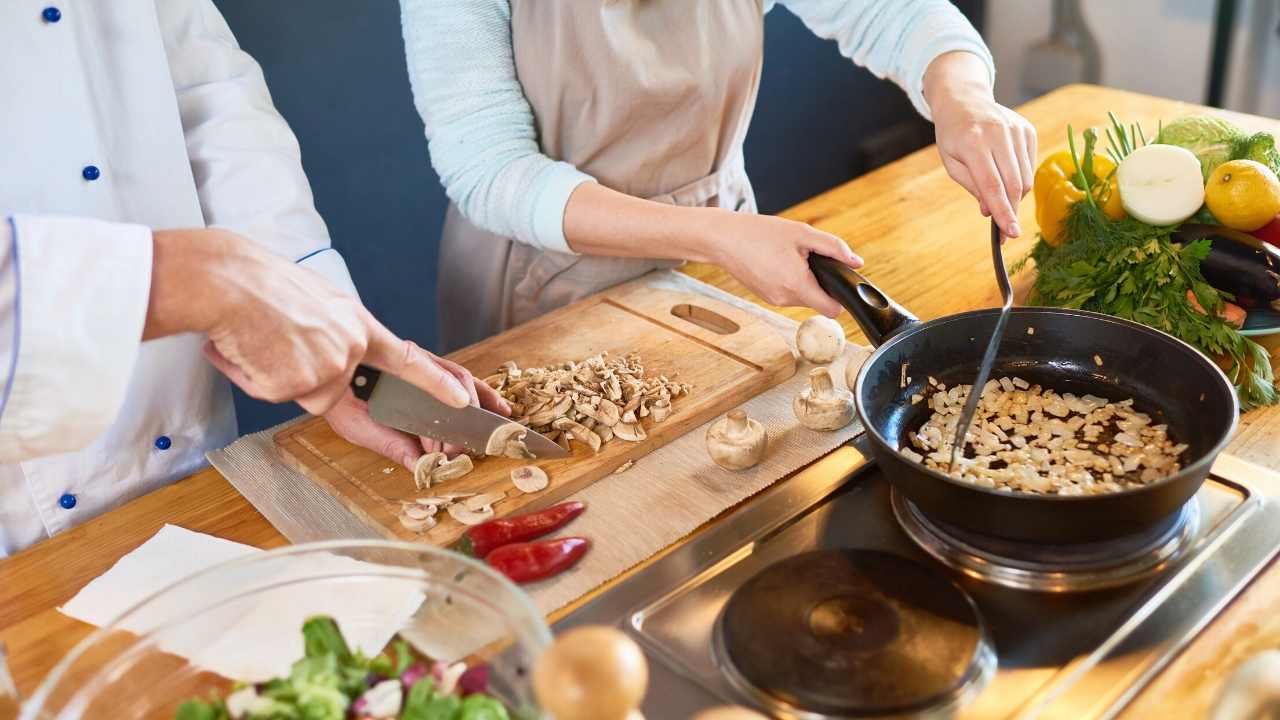 |
Why Did These Strange 1950s Inventions Kill So Many People?| Hidden Killers | Absolute HistoryDr Suzannah Lipscomb looks at the hidden dangers of the British post-war home. In the 1950s, people embraced modern design for the first time after years of |
 |
The 5 SURPRISING Vegetables You Need To Eat To STAY HEALTHY! | Dr. Steven GundryWe are taught that all vegetables are healthy for us. Dr. Gundry says that is FALSE and not all vegetables are built the same! That’s why he’s here to share |
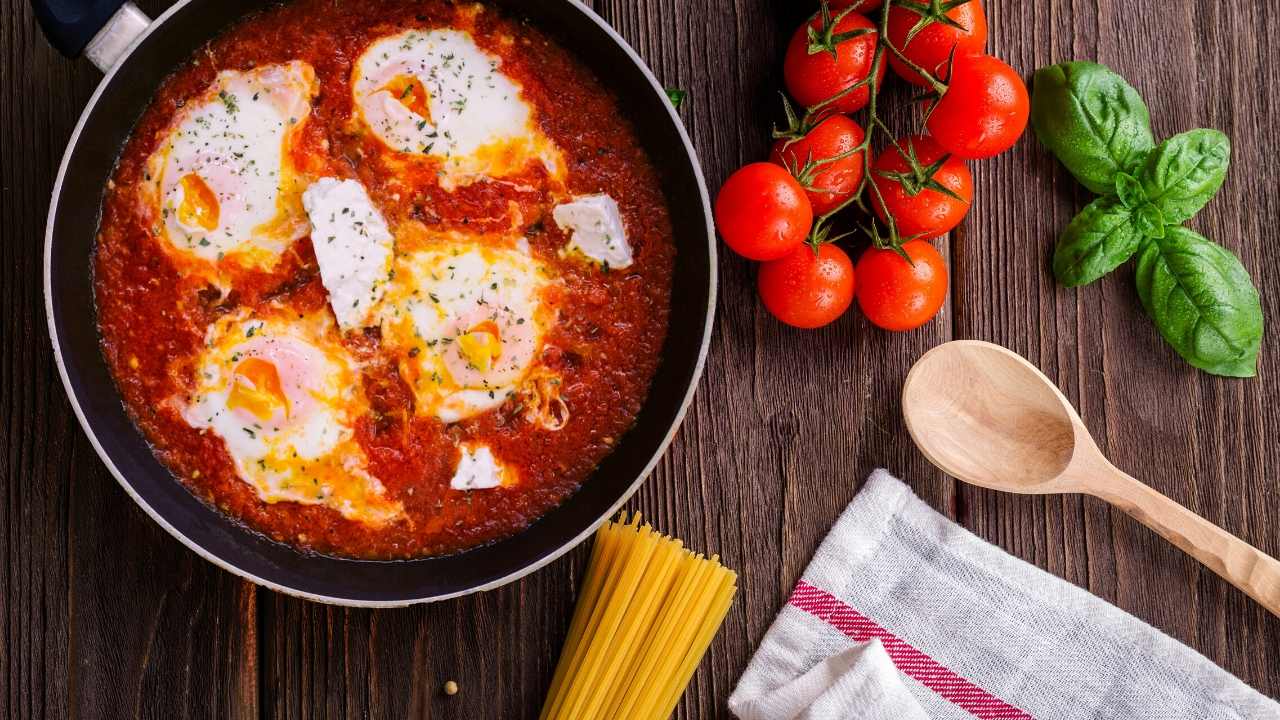 |
The SHOCKING Superfoods You Should NEVER EAT! | Dr. Steven GundrySuperfoods - we’ve all heard about them but what are they really? On today’s episode Dr. Gundry dives right into the superfoods you should and should NOT |
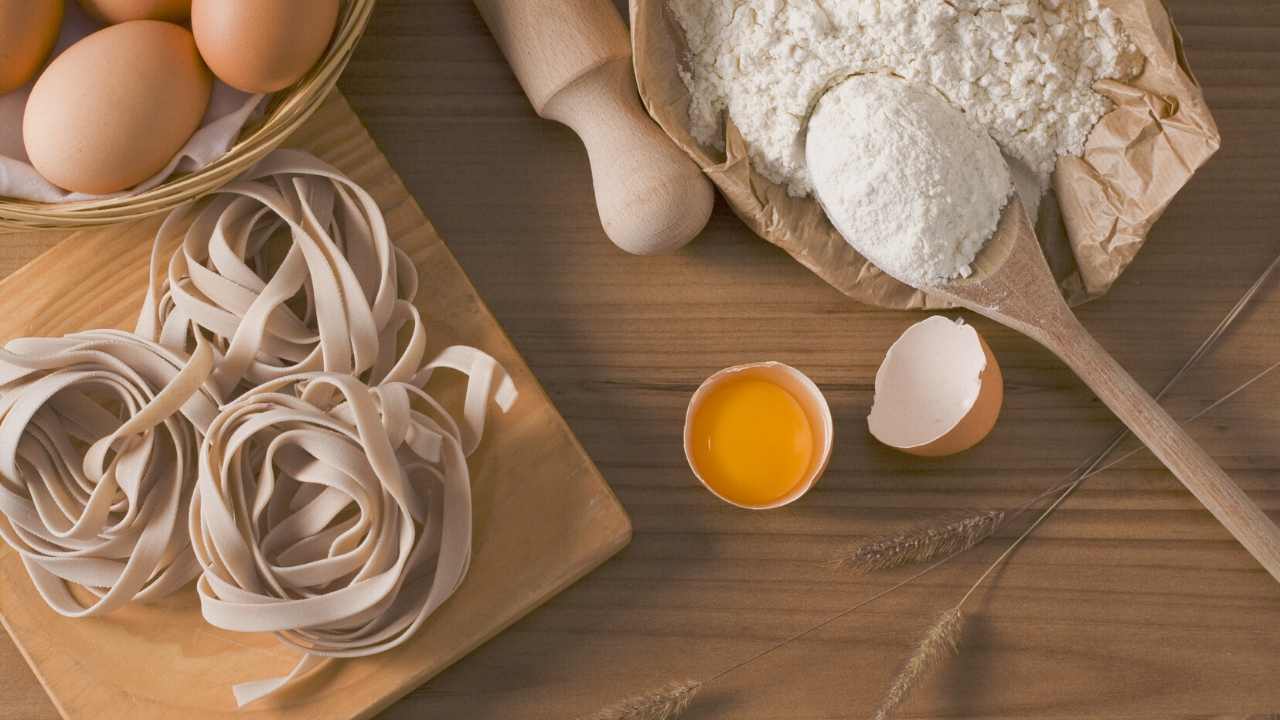 |
Spice Expert Guesses Cheap vs Expensive Spices | Price Points | EpicuriousIn this episode of 'Price Points', Epicurious challenges spice expert Ethan Frisch of Burlap & Barrel to guess which one of two spices is more expensive. Ethan |
 |
Are Burger King''s Spicy Chicken Fries TOO Hot?For a limited time, Burger King has released their new Spicy Chicken Fries! Featuring a blend of spices added to their classic Chicken Fries, I'll find out how |
 |
Spice - Wikipediadefinition of spices |
 |
How Did Nutmeg Cause Wars In Indonesia? | The Spice Trail | Absolute HistoryKate Humble embarks on a journey around the fabled spice islands of eastern Indonesia in search of two spices that launched epic voyages of discovery, caused |
 |
Learn Every Single Technique For Using Spices in One DishShop the gear in this video (and more) at ProHomeCooks.com ➡️ https://prohomecooks.com/ Getting your kitchen gear from Pro Home Cooks supports more content |
 |
The SHOCKING BENEFITS of Spices On Your Health! (Take One Teaspoon Of This) | Dr. Steven GundryWe all use spices to cook, but did you know that they can be a great tool to incorporate more beneficial polyphenols into your diet? That’s right, with just |
 |
Poultry Seasoning For TurkeyIf you're looking to spice up your turkey meals, you should consider putting poultry seasoning on your bird. Not only is it a great way to add some.. |
 |
Delicious Seasonings to Add Flavor to Your DishesIf you're looking for delicious seasonings to add to your dishes, you're in the right place. There are many options out there, from chili powder to.. |
 |
How to Add Spices to Mac and CheeseThere are a number of spices that you may want to try out when cooking mac and cheese. Some of these ingredients include red peppers, oregano,.. |
 |
Chaat Masala and Garam MasalaChaat masala is a type of spice mix that is used to flavor chaat. It is made from several spices, such as cumin, dried ginger, coriander, asafoetida, |
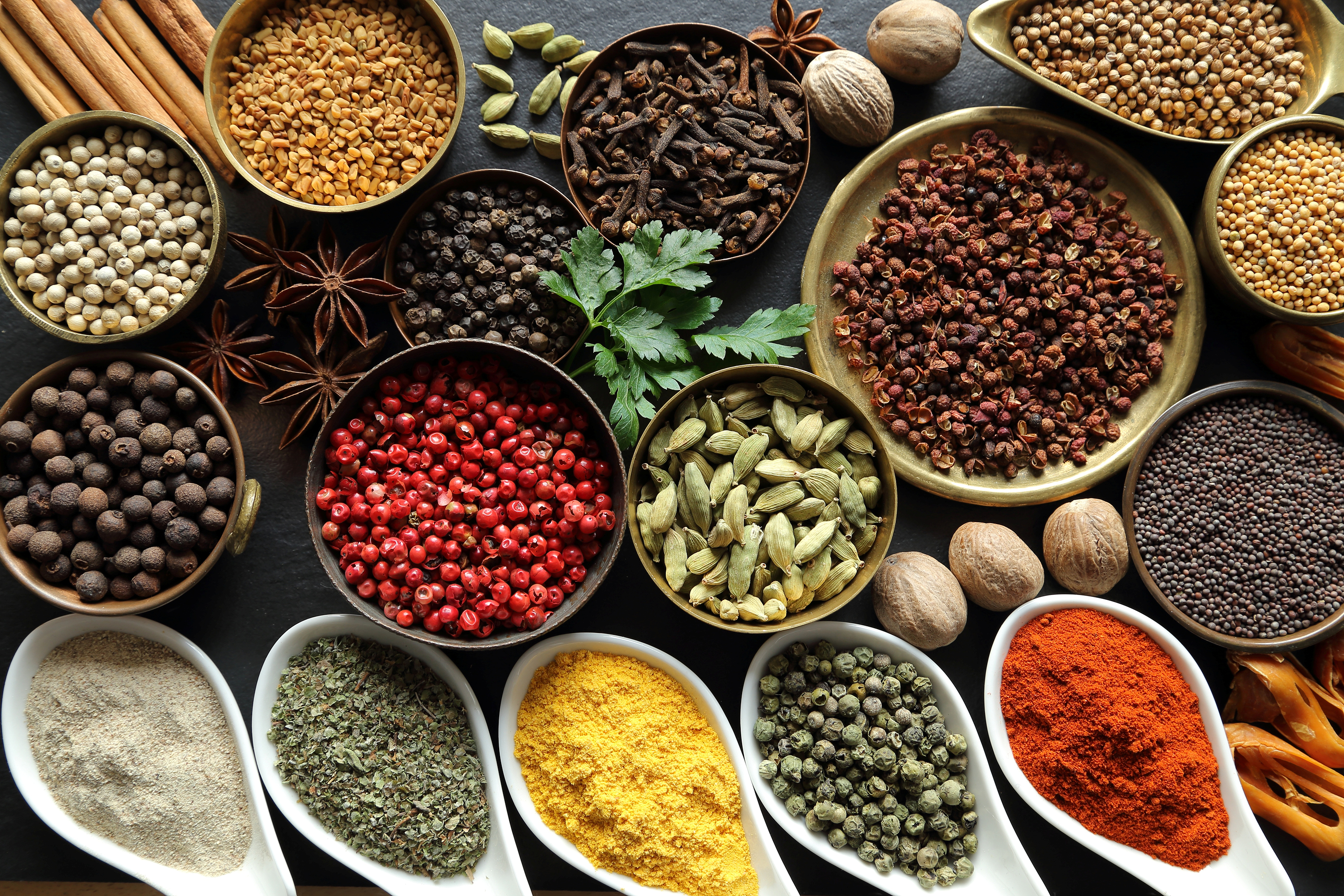 |
27 Essential spiecs you need to knowImportant spices in cooking |
 |
No Salt Seasoning BlendsIf you want to make the perfect grilled chicken or steak, it's time to try a no salt seasoning blend. It's the best way to add flavor to any dish.. |
 |
Coriander Ground Vs Coriander WholeCoriander is one of the most popular herbs used for cooking and can be either whole or ground. Its taste is very mellow, and is perfect for adding a.. |
 |
Homemade Blackening SeasoningMaking your own homemade blackening seasoning is a great way to add flavor and freshness to your dishes. This spice mix can be used in a variety of.. |
 |
Sweet Potato RavioliSweet potato ravioli is a popular pasta dish that is very easy to make. The recipe uses sweet potato as the filling and makes a light and filling.. |
 |
Greek SeasoningGreek seasoning is a common spice used in many types of dishes. For example, it can be used as a dry rub on chicken wings before baking, or it can be |
 |
AbgooshtAbgoosht is a hearty Persian soup that is made from mutton. It is a traditional stew that is thickened with chickpeas. It is also known as Dizi... |
 |
Greek Cabbage RollsOne of the most popular dishes you can find on the menu at Greek restaurants is cabbage rolls. They are a great option when you're on the go and need |
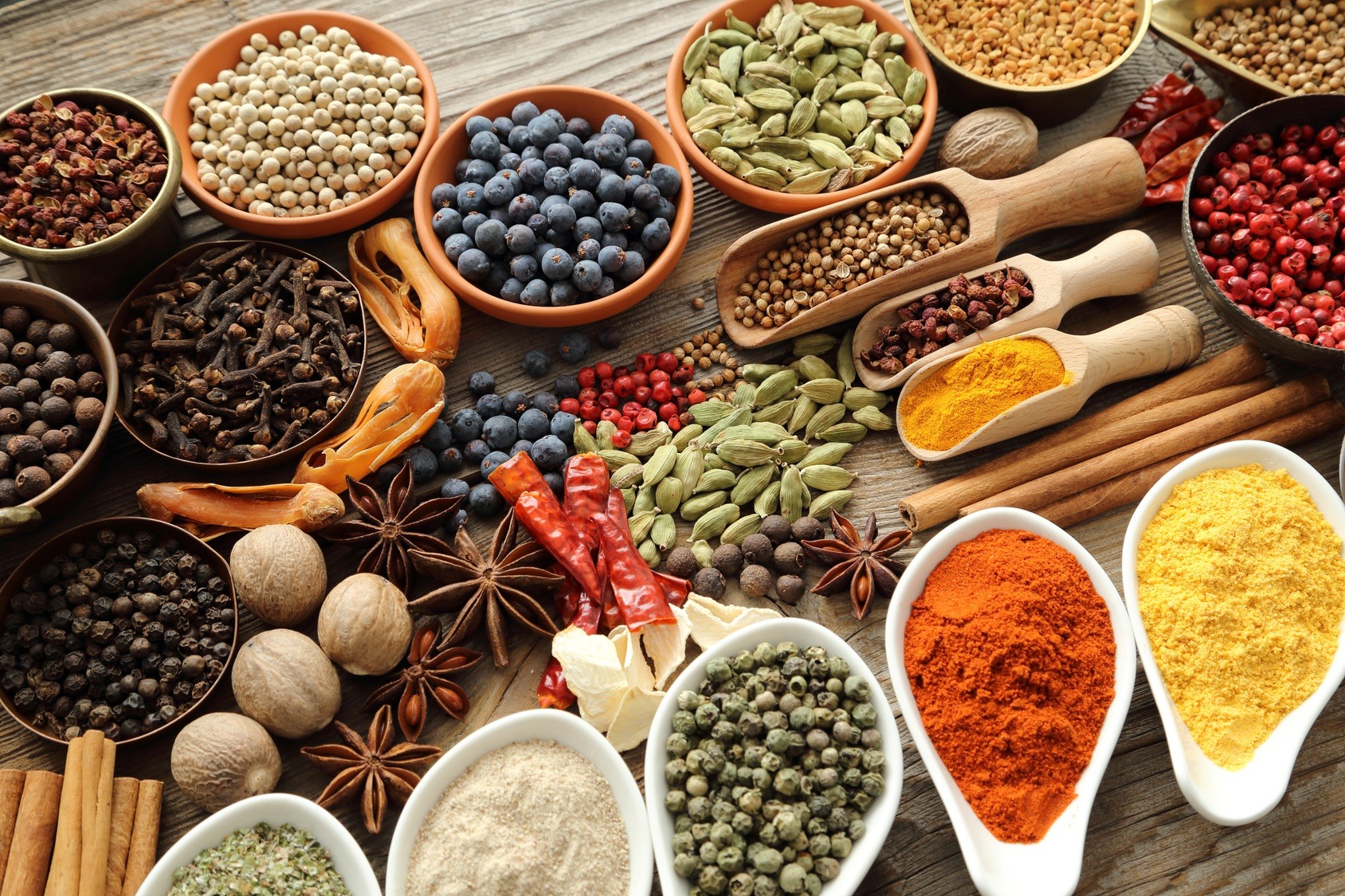 |
Your Herbs and Spices Guides & BlogsHerbs, spice & everything nice, these blog and articles explain the many uses of spices, including spices for weight loss, spices for brewing, and how to store |
 |
Mexican Cauliflower Rice RecipeIf you have been looking for a healthy meal option, you can try making Mexican cauliflower rice. This delicious recipe combines a blend of vegetables, |
 |
A Guide to Indonesian FoodIndonesia is an archipelago country and its cuisine is a mix of regional culinary traditions. Its dishes include sweet and savory dishes, based on.. |
 |
How to Make Homemade Spaghetti SauceSpaghetti is a very popular Italian dish that is made from durum wheat semolina. It is also often enriched with vitamins and minerals. Some people.. |
 |
How to Prepare a Chicken on Skewer RecipeIf you're looking to cook up a tasty meal for the family, why not try out a chicken on skewer recipe? This is a fast, easy dish that your whole.. |
 |
Powdered SpicesThe ingredients for powdered spices are usually either individually roasted or are a combination of a variety of different spices. These include.. |
 |
Air Fryer Chicken ParmesanIf you want to find a delicious and quick way to cook your favorite chicken dishes, try using an air fryer. The results are fantastic and are sure to |
 |
What Type of Cardamom Should You Use in Your Cooking?Cardamom is an ancient spice, used for centuries in the kitchen. When you're using cardamom in your cooking, there are a few things you should know... |
/spices-5689d3013df78ccc1533efad.jpg) |
The Chopping Block Cooking Blog | spicesspices | Visit our blog for recipes, cooking tips and techniques as well as our staff's favorite eats and travel adventures. |
 |
Lasagna SpicesFor people who enjoy lasagna, there are a variety of spices to choose from. Some of the spices include paprika, cayenne pepper, thyme, and fresh.. |
 |
Italian Dressing RecipesIf you are looking for a new way to dress your favorite dishes, you may want to try one of the many Italian dressing recipes out there. These.. |
 |
VIETNAM BUSINESS NEWS OCTOBER 13 - PepperHCMC economy gains strong growth in Jan-SeptGross regional domestic product (GRDP) of HCMC between January and September reached nearly VND1,100 trillion in |
 |
SALMONELA - EU strengthens measures against brazilian pepperAt the beginning of October the European Spice Association inssued a letter direcyed to it members,stating that EU Commision will strengthen the rules on |
 |
Cloves Market Latest NewsRoyal Golden's Cloves Market Latest NewsBy Parsram DhiraniMadagascar - With weeks of slow progression of incoming new crop from field, goods are now |
 |
Important Report - Brazilian Pepper ContractsSince the middle of November when the rainy season finaly came to Brazil, bad weather and heavy rains are threatening Pepper production areas disrupting |
 |
BRAZIL - PEPPER PRODUCTION SUFFERING BAD WEATHERPARTIALLY FLOADED PEPPER PLANTATION IN LINHARES - ESThe heavy and constant rains that have been happening non-stop for more than a month are hampering the |
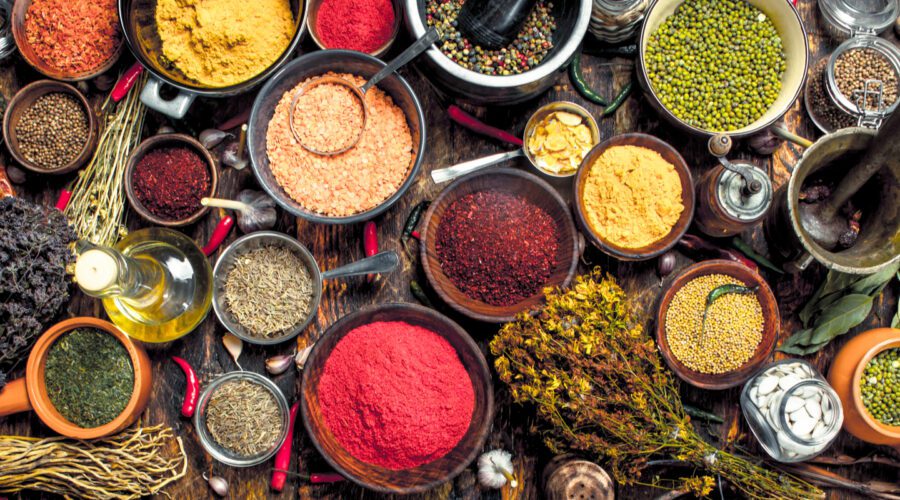 |
Spice Talk - Spice Station - New Ideas for Cooking with Spices!This spice blog writes about Indian fenugreek, Canadian coriander, Egyptian dill weed, Syrian Aleppo pepper, Granada nutmeg, & more from around the world. |
 |
CARDAMOM - Guatemala in line to export around 55,000 MT for the 22-23 SeasonPlease read the short report/comment we received of an operator ofCardamom in GuatemalaHello friends, looking forward to seeing you again next week, wanted to |
 |
UPDATE - VIETNAM PEPPER PRICES FEB 22February 22, 2023|Black Pepper Offers, Vietnam Market Update This week, China is buying slowly, people expect the price will come down a little bit but today, |
 |
Vietnam Pepper exports hit 129 million USD in first two monthsVietnam exported over 41,000 tonnes of pepper worth 129 million USD in the first two months of this year, up 35% in volume, but down 7.4% in value over the |
 |
GLOBAL MARKET OVERVIEW GARLICMarch 2023FreshPlaza.comThe global garlic market is experiencing mixed fortunes, according to recent reports from around the world. In the Netherlands, demand |
 |
Vietnam Pepper market update 13th March 2023 – Week 10.- Pepper price has had an impressive increase in 2023 with an increase from 61,000vnd from January 1, 2023 to 67.000vnd until March 12, 2023, corresponding to |
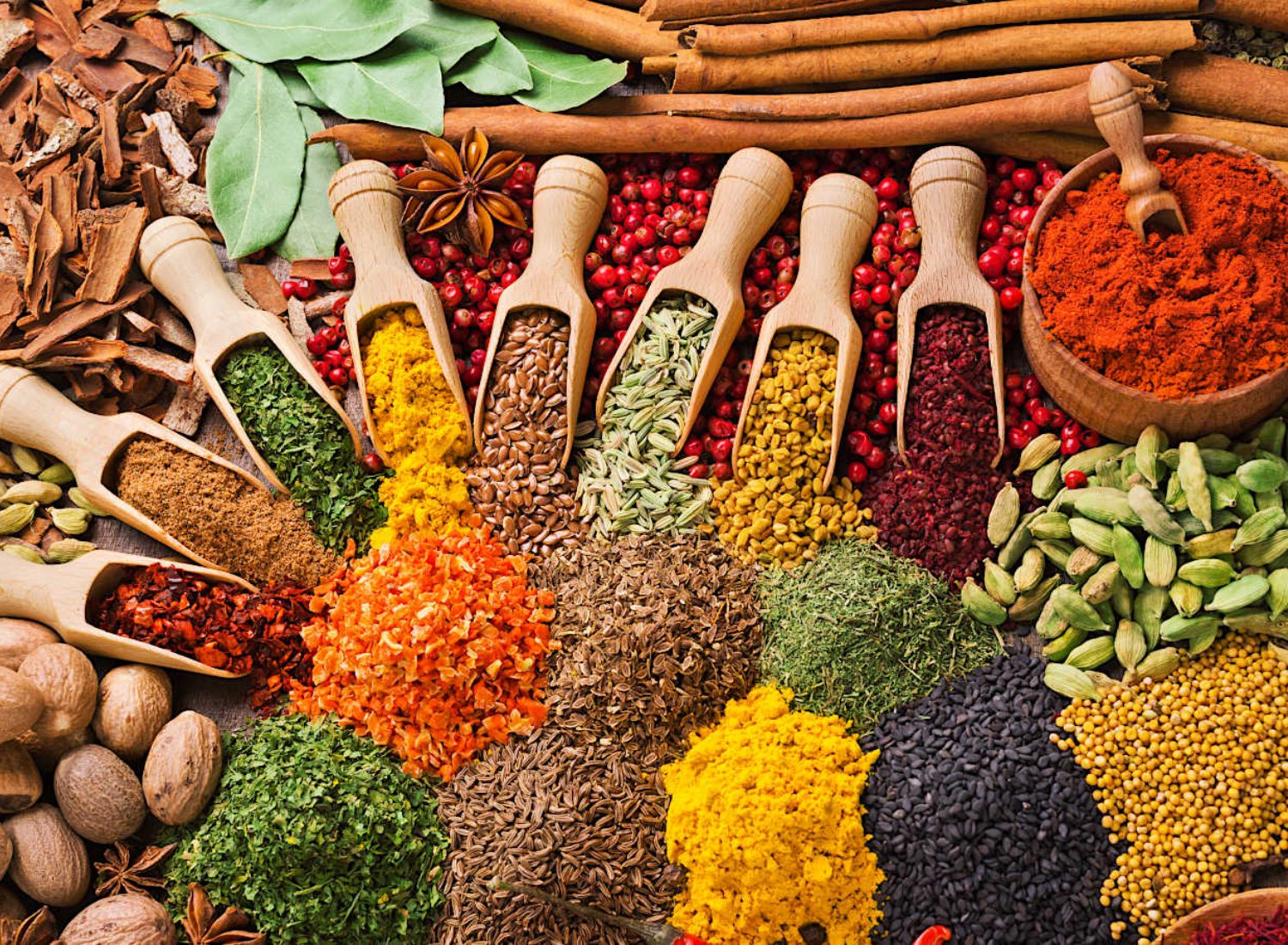 |
Blog | Herbs Spices and Seasonings | High Quality | World of SpiceWorld of Spice is your online store for a massive range of High Quality Herbs Spices and Seasonings. Wholesale, Foodservice and Catering High Quality Herbs |
.png)





